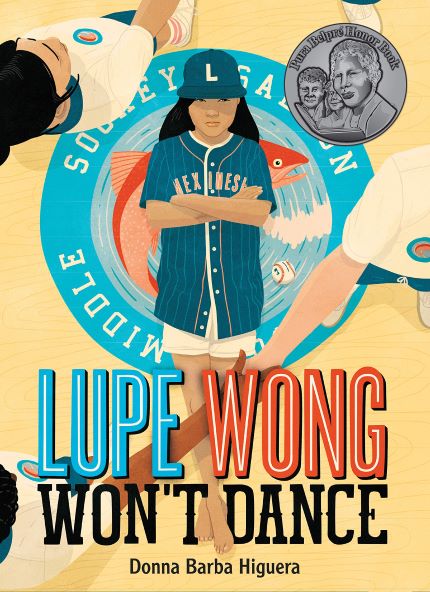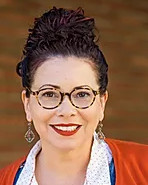Meet-the-Author Recording with Donna Barba Higuera
Lupe Wong Won't Dance |
Donna Barba Higuera introduces and shares some of the backstory for creating Lupe Wong Won't Dance.
Translate this transcript in the header View this transcript Dark mode on/off
Donna Higuera: Hello. My name is Donna Barba Higuera and I am the author of Lupe Wong Won't Dance. The idea for Lupe Wong Won't Dance showed up one night at my dinner table. I was having my usual dinner with my daughters, and my youngest daughter came home from middle school and was upset that she was going to have to square dance in PE. Her older sister was not supportive. Not only did she inform her that she could not square dance with her best friend, Chrissy. She was going to have to dance with a boy, and she was going to have to hold hands with that boy.
This all seemed very unfair to my daughter. I started remembering how I felt when I was her age and how it felt to be told that you were going to have to do something. This character, Lupe, showed up at our dinner table. She was imaginary, but she had a big voice and she did not want to dance. She didn't want to conform to the dress code or social norms on gender or racial stereotypes, much like my daughter, but Lupe had a voice. I think many of us growing up don't feel that we have a voice. So that night I went to my room and I wrote down the first paragraph of Lupe Wong Won't Dance.
Lupe Wong is a combination of myself and my daughters. My daughters are Mexican and Chinese. When I was growing up, I myself had my Mexican or Hispanic culture, and I was also half-White. Navigating during those times could be a little bit difficult. My kids have to go through those same types of cultural navigations. I wanted to show that in Lupe Wong Won't Dance. I really feel that other than the times that my kids' dad and my family were together, I never really got to experience those two sides of cultures together. Maybe a couple of times, but in the book, when I was able to write those scenes, it came to mind vividly about how our families would have interacted if we had lived in the same state and in the same town.
There are a few things that I hope that a reader in the end would take away after reading Lupe Wong Won't Dance. I would hope that they would ponder a little bit, maybe about the way that Lupe approaches things, and maybe how they would do it differently or maybe a situation where they have felt the same way, but they were too afraid to say something. How would they do that differently? I also hope that they would see scenes with Lupe's family and see how she comes from two different cultures but also see how they have similarities within their own families. A lot of those things are just love of family and the love of grandparents and the rivalries with your siblings. All of these things are universal, and so we're not all so different from Lupe Wong.
I do think that this book helps to show that if somebody has enough perseverance and persistence, they can do anything. That's what Lupe wants to do. She wants to be the first female pitcher in the Major League. We just experienced where Kim Ng became the first general manager in Major League Baseball for the Marlins. So these things that we once thought were impossible are happening, and people are doing them. I hope that a reader will read this book and know that nothing is impossible.
Now, I'd like to share the first paragraph of Lupe Wong Won't Dance:
My gym shorts burrow into my butt crack like a frightened groundhog. Note to self: remember shorts from home so you don't have to wear scratchy school loaners ever again. I can fix this. I pull up my kneepads, adjust my wristbands, and tighten my ponytail with a yank. Ready for battle, a.k.a. seventh-grade spring P.E.
This Meet-the-Author Recording with Donna Barba Higuera was exclusively created in November 2020 by TeachingBooks with thanks to Levine Querido.



